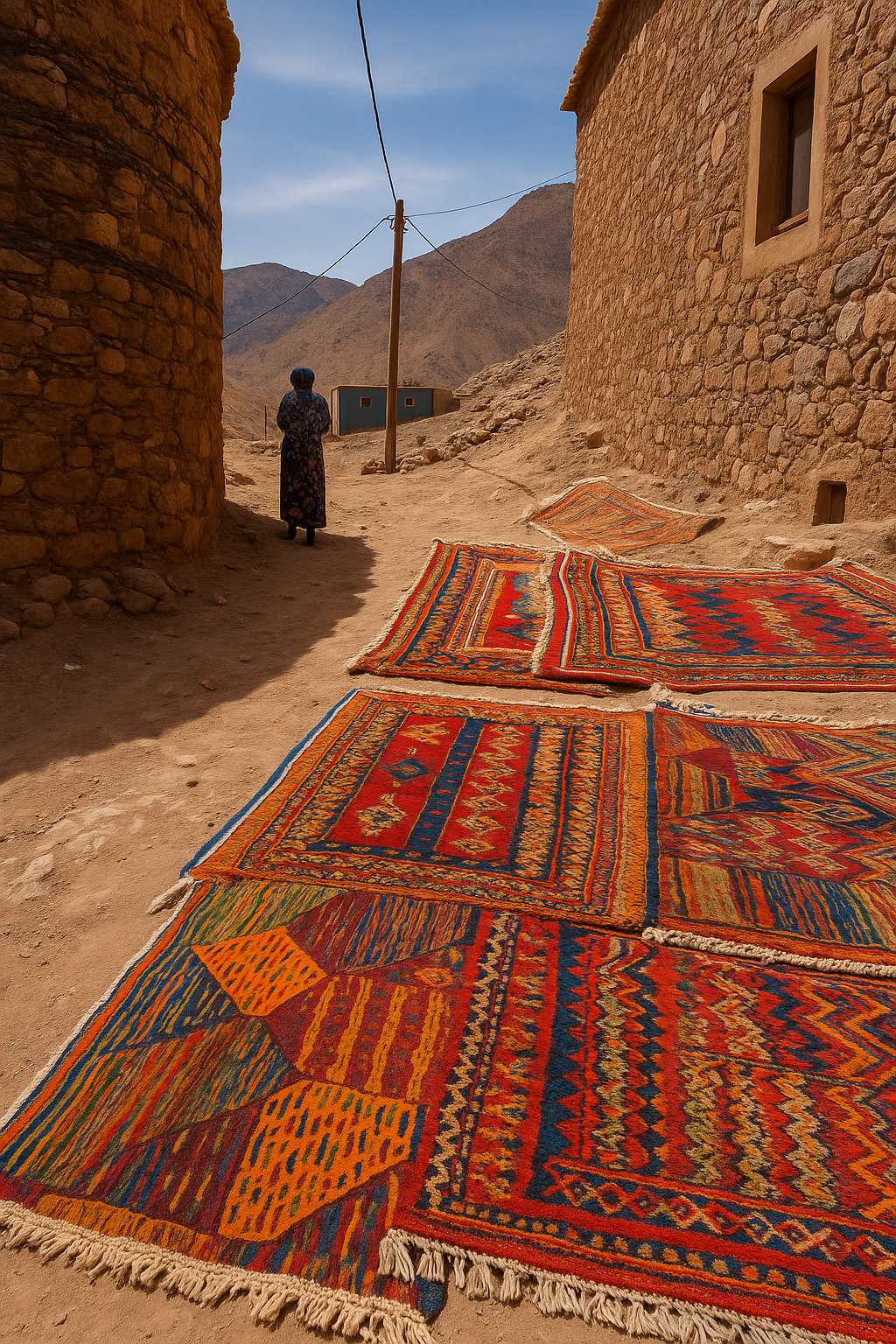A Berber rug is not just a beautiful object.
It is a living heritage, woven by hand, heart, and history — a tapestry of symbols, colors, and traditions passed down through the ages.
At Tamazirt, we believe that knowing where a rug comes from makes it even more meaningful. That’s why we invite you on a journey through the origins of Berber rugs, from the high peaks of the Atlas to the heart of the Amazigh spirit.
🏔️ Where It All Began: The Atlas Mountains
Berber rugs are rooted in the daily life of the Amazigh (Berber) tribes, indigenous people of North Africa. For centuries, Amazigh women have woven rugs to protect their homes, tell their stories, and preserve their culture.
Each region of Morocco has developed its own weaving style, reflecting the environment, resources, and cultural symbols of its community.
🧶 A Map of Traditions: Rug Styles by Region
• Beni Ouarain (Middle Atlas)
Known for their thick ivory wool and minimalist black lines, Beni Ouarain rugs were traditionally used by nomadic tribes for insulation against the cold. Their geometric patterns often carry meanings of protection or fertility.
• Azilal (High Atlas)
Colorful, free-spirited, and expressive — Azilal rugs feature vivid designs that often blend abstract art with tribal symbolism. Each rug is like a diary page of the weaver’s life.
• Boujad (Haouz region)
These vibrant rugs play with rosy and burgundy tones, asymmetry, and symbolic abstraction. Boujad rugs are spontaneous and feminine — often woven during key life moments.
• Zanafi (Southwest High Atlas)
Elegant and refined, Zanafi rugs are known for their flatweave technique and bold black-and-white diamond patterns. A perfect fusion of tribal identity and modern design.
• Taznakht (Siroua Mountains)
Taznakht rugs are true works of art: rich in color, texture, and detail. They combine knotting and flat weaving, offering a complex structure that showcases the mastery of the craft.
✨ Symbols That Speak
Berber rugs are more than decorative: they are coded languages.
Common symbols include:
Diamonds: protection against the evil eye
Lines and arrows: journey, movement, transformation
Hands, eyes, or female shapes: fertility and femininity
At Tamazirt, we carefully document and respect these symbolic languages. Every rug we offer carries a unique story — woven with meaning.
🌿 A Tradition That Lives On
In today’s world, Berber rugs have found their place in contemporary interiors across the globe — but their essence remains unchanged:
Handcrafted with love
Rooted in nature
Carrying the voice of Amazigh women
By choosing a Tamazirt rug, you’re not only bringing beauty into your home — you’re helping preserve a culture, empower rural women, and honor centuries of wisdom.
👉 Explore the ancestral beauty of our rugs:
🧶 See Our Collection
